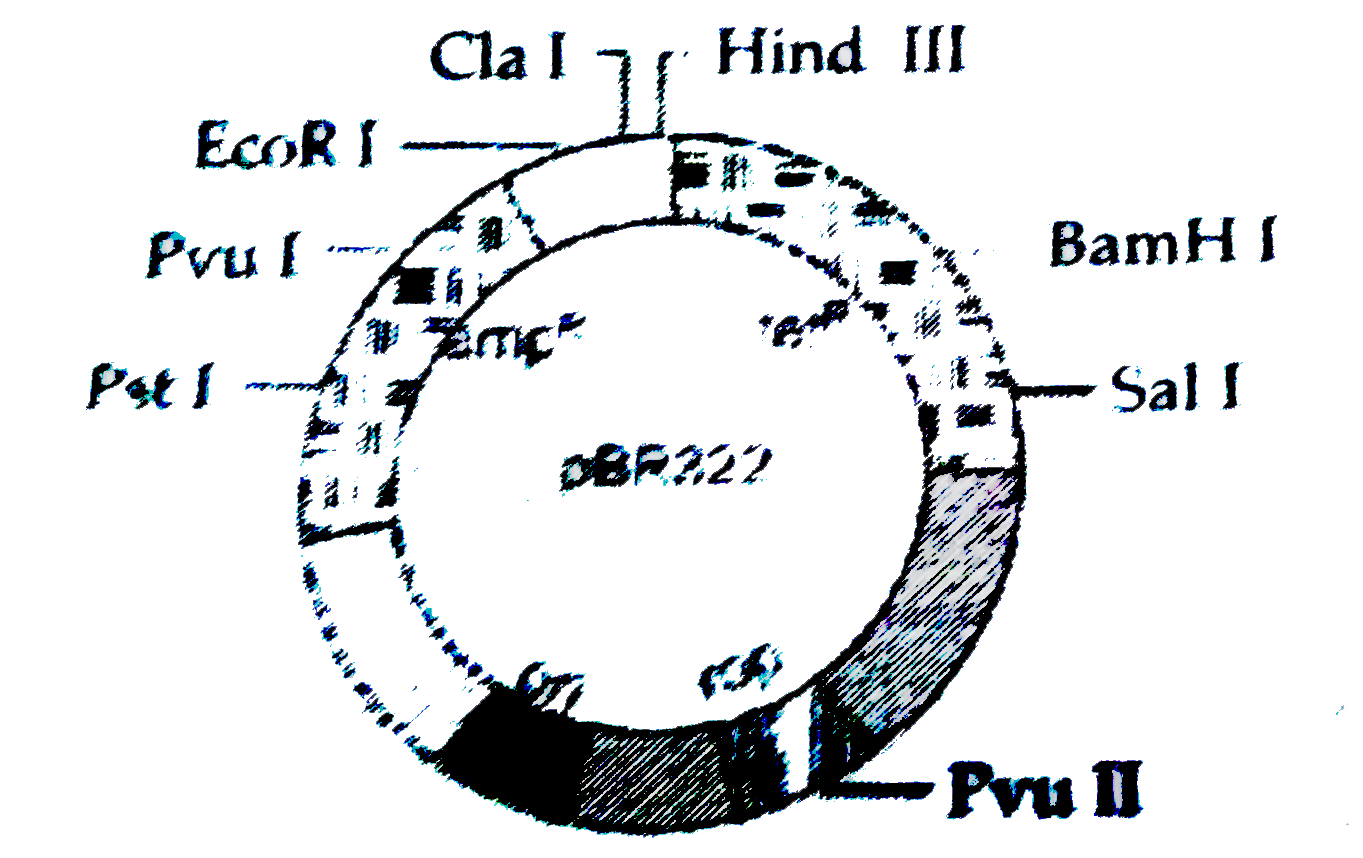(i) Name the organism in which the vector shown in inserted to get the copies of the desired gene.
(ii) Mention the area labelled in the vector responsible for controlling the copy number of the inserted gene.
(iii) Name and explain the role of a selectable marker in the vector shown.

(i) Esherichia coli
(ii) Origin of replication 'Ori' controls copy number of inserted gene.
(iii) The selectable markers are ampR (resistance to ampicillin) and tetR (resistance to tetracycline). Selectable markers help to select the host cells which contain the vector and eliminating non-transformants.
If a foreign DNA ligates at the BamHI site of tetracycline resistance gene in the vector pBR322) the recombinant plasmid loses the tetracycline resistance due to insertion of DNA. It can still be selected out from non-recombinant.
Topper's Solved these Questions
- BOOK - XII BOARDS PREVIOUS YEARCHAPTER - XII BOARDSEXERCISE - SECTION-D50videos
XII BOARDS
- BOOK - XII BOARDS PREVIOUS YEARCHAPTER - XII BOARDSEXERCISE - SECTION -A12videos
XII BOARDS
- BOOK - XII BOARDS PREVIOUS YEARCHAPTER - XII BOARDSEXERCISE - SECTION-B85videos
XII BOARDS
- BOOK - XII BOARDS PREVIOUS YEARCHAPTER - SAMPLE PAPER 2019EXERCISE - Section E Part B3videos
SAMPLE PAPER 2019
Similar Questions
Knowledge Check
- Question 1 - Select One
The techniques of insertion of a desired gene into DNA of plasmid vector is
AGene splicingBGene dressingCGene cloninggDGene drafting - Question 2 - Select One
The technique involving insertion of a desired gene into the DNA of plasmid vector is know as
ADressingBSplicingCCloningDDrafting - Question 3 - Select One
Assertion : If one wants to recover many copies of the target DNA it should be cloned in a vector whose origin support high copy number
Reason: Ori is responsible for controlling the copy number of the linked DNA/target DNAAIf both assertion and reason are true and the reason is the correct explanation of the assertionBIf both assertion and reason are true but reason is not the correct explanation of the assertionCIf assertion is true but reason is falseDIf both assertion and reason are false
(a) Name the selectable markers in the cloning vector pBR322 ? Mention the role they play.
(b) Why is the coding sequence of an enzyme b-galactosidase a preferred selectable marker in comparison to the ones named above ?View SolutionThe given figure is the diagrammatic representaton of the E. coli vector pBR322. Which of these genes can act as selectable marker ?
 View Solution
View SolutionIf a desired gene is identified in an organism for some experiments, explain the process of the following
(i) Cutting this desired gene at specific location
(ii) Synthesis of multiple copies of this desired geneView SolutionMention the role of (i) selectable marker, (ii) Ori and (iii) rop in E. coli cloning vector pBR322.
View SolutionIn cloning vector pBR322, the Barn HI cloning site is found in which selectable marker gene?
View Solution

